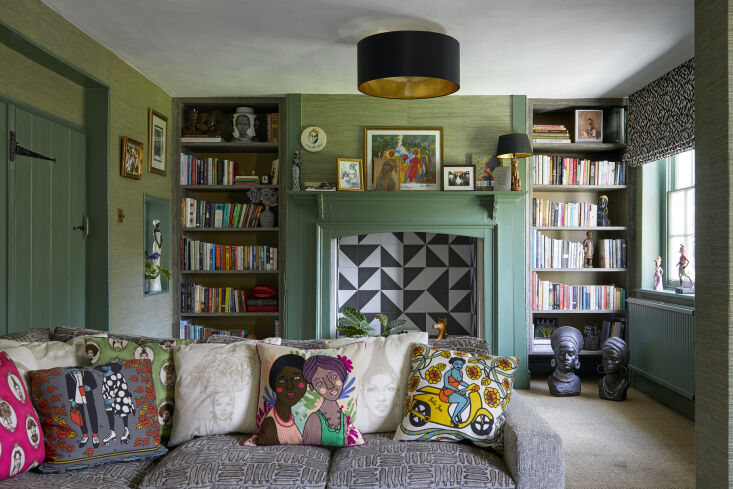Sisters Ellie and Anna Stathaki grew up in Greece and separately made their way to London for postgrad studies. Nearly 20 years later, they both found themselves happily, if unexpectedly, still in London and working in overlapping fields: Ellie is the architecture editor at Wallpaper* magazine and Anna is an architecture and interiors photographer.
Not surprisingly, they decided to collaborate on a contemporary design book, and the subject they zeroed in on is something they both love about their adopted home: the many inventive ways people from near and far live in the city’s historic brick houses. “London has rows upon rows of them, and, at first glance, they can look quite similar, but they’re not, especially once you step inside,” they say. House London, newly out from Frances Lincoln, presents a series of case studies that are, explains Ellie, “essentially about diversity, versatility, and imagination.”
Here, we’re presenting a notable example from the book: Cottage Noir, online shop owner Kemide Lawson’s Georgian worker’s cottage in north London, a Grade-II listed structure layered with elements that celebrate her family’s Nigerian and Jamaican heritage. Join us for a tour.
Photographs by Anna Stathaki from House London courtesy of Frances Lincoln Publishers, unless noted.

The living room has fireplaces at either end; Kemi tiled the nonworking one in a random black and white pattern to “lend some energy to the space—I love geometric shapes and the symbolism of them is part of the design landscape of my West African heritage.”






More Stories
Ceragran: Sea, sand and stoneware.
OLED vs QLED – Which TV Is Best For You?
Kids Bathroom Ideas & Decor